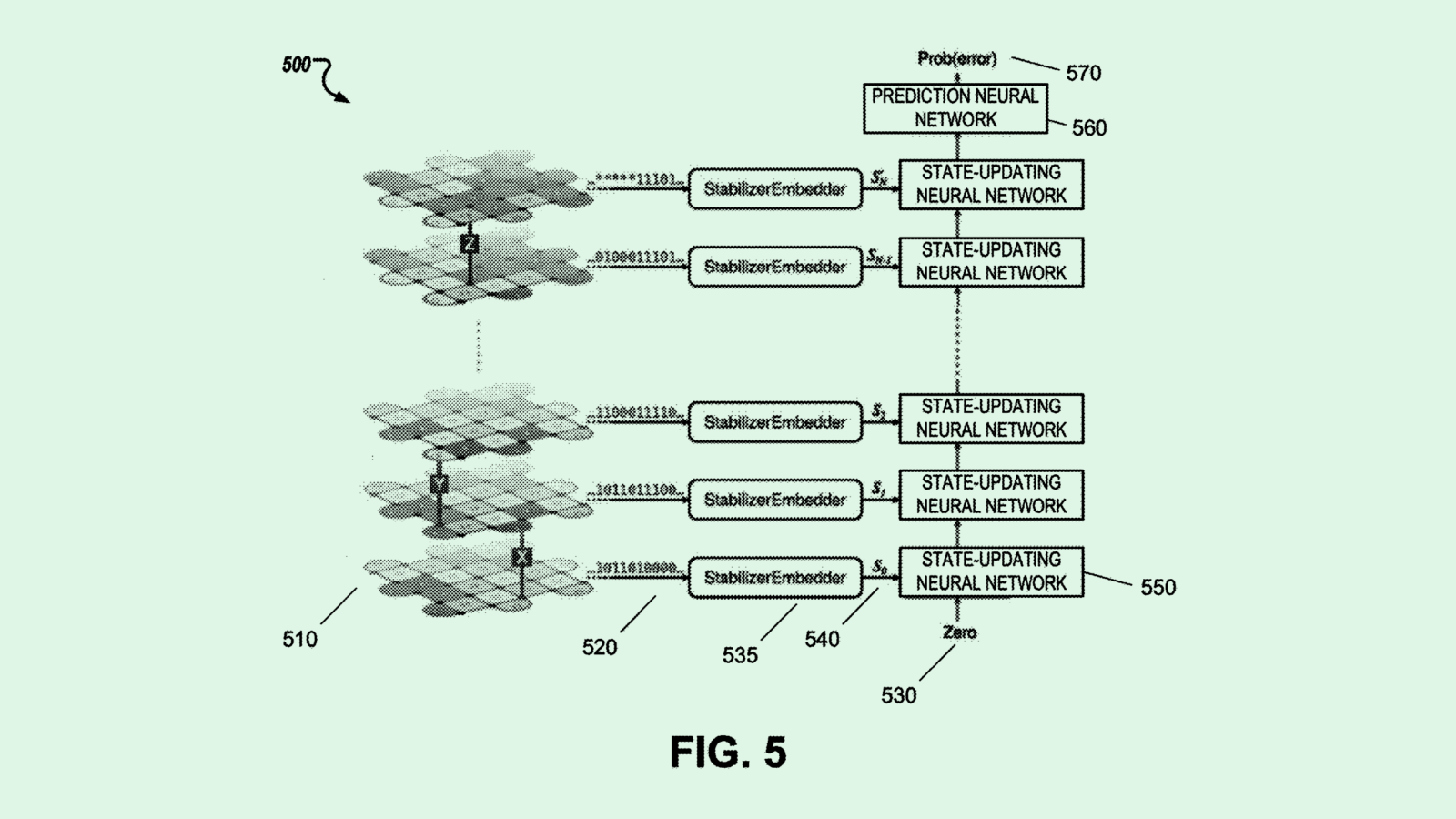Happy Monday and welcome to CIO Upside.
Today: AI agents are all the rage among enterprises, but deploying this tech is just as risky – if not more so – as adopting any AI program. Plus: Tariffs come for IT budgets; Google uses neural networks to correct quantum computers
Let’s take a peek.
The Risky Business of Deploying AI Agents

Mesmerized by the hype around AI agents, many companies may not be paying enough attention to the potential hazards that come with them.
Not only do AI agents bear the same challenges as ordinary language models, their autonomous nature has the potential to multiply the risks, said Satish Shenoy, regional vice president of global technology alliances and AI strategy at SS&C Blue Prism. The frenzied speed at which enterprises are adopting the tech only exacerbates the dangers.
“When you’re making these autonomous, there’s a lack of human oversight, and you are hoping and praying that what comes out of the agent is in line with what you expect,” said Shenoy.
AI agents are built to interact on their own with several different parts of businesses. Because of that, risks such as data security slip-ups, compliance and governance problems, and quality issues with an AI agent could have “cascading effects,” said Shenoy, with the agent’s access creating an expanded attack surface.
That doesn’t mean that AI agents should be avoided entirely, Shenoy said. Enterprises simply need to understand what they’re getting into and employ guardrails before diving in.
There are several different types of precautions that can help rein in agents, said Shenoy, all of which should be considered by enterprises:
- One is governance and risk-management guardrails, in which enterprise leaders assess the risk and reward of implementing an agent in any given situation. That includes taking into account regulatory considerations, Shenoy added.
- Another is technical safeguards. Though these can be a “moving target” when considering the speed of change with AI, observability and oversight can help enterprises understand an agent’s outputs and behavior under different conditions, he said.
- Finally, there are ethical guardrails such as transparency and explanations about both how and why AI agents are being used, he said. “Any decision you have the AI agent make can be audited and should be audited.”
Despite the tech industry’s current excitement about agentic AI, it’s important not to let the hype overpower common sense: Think through why you need the tech before jumping in head first. “The first thing is to know your objective,” Shenoy said. “Don’t use a hammer to kill an ant.”
Starting small with deployments for specific use cases and thoroughly analyzing the results could keep your enterprise from the financial, reputational and regulatory damages of an agent going haywire, said Shenoy.
“The speed of adoption is really outpacing the speed of governance frameworks being deployed” he added.
How Tariffs Could Hurt Your IT Budget

IT departments may need to brace themselves for tariffs.
The Trump administration’s 25% levies on goods from Canada and Mexico and additional 10% duties on China may have sizable impacts on U.S. enterprise IT firms, curbing direct revenue and profitability, and sending hardware and software costs skyrocketing, said Manish Jain, principal research director at Info-Tech Research Group.
While some tariffs on Canada and Mexico have been delayed until next month, China has not received the same treatment. Tech firms “will be squeezed” because much of the industry’s supply chain originates from China, said Jain. The world’s second-largest economy accounts for nearly 80% of laptop imports into the U.S., according to Info-Tech. “China is not only part of the supply chain, it’s the start of the supply chain,” said Jain.
“Investments are going down across impacted businesses. When there’s a revenue uncertainty, they don’t want to have any project which is discretionary in nature,” said Jain. “The first thing that is going to be impacted is that CIOs will be asked to cut their budgets.”
In order to cope with the new landscape, businesses will need to get their priorities straight, said Jain.
- Enterprises should identify which parts of their IT budget are business-critical and where they can improve operational efficiency. Figuring this out requires understanding the real value that comes from every IT investment.
- When assessing your IT budget, options like deferring purchases or renegotiating contracts could help soften the blow, he said. With software and service providers, “CIOs may have to be ready to give them longer-term commitments to reduce the chances of price increases,” said Jain.
In some cases, enterprises may take the opportunity to leverage AI for efficiency, he said. But that could be a double-edged sword: AI might address certain resource or talent gaps, but given its cost, it’s not a solution for everyone and should be reserved for the most impactful use cases.
“No conversation about tech goes without AI now, but AI also requires investments,” said Jain. “It’s a dichotomy, essentially, where businesses want to grow, but in these times, they are not able to spend money on that growth.”
The most important thing for IT firms to remember is to stay flexible, especially in a constantly moving market, said Jain. “Things are going to be uncertain .. frameworks and strategy should be adaptable.”
Google Patent Highlights AI and Quantum’s Symbiotic Relationship

Quantum computers have a tendency to make mistakes. Google believes AI might be able to help.
The tech giant is seeking to patent a system for “quantum error correction using neural networks.” Its approach tracks a quantum computation over several time steps, deploying a neural network to detect mistakes along the way in real time.
For reference, quantum computing errors can be caused by anything that disturbs the fragile state of superposition that these devices need to maintain to make calculations. Any environmental “noise,” such as fluctuations in temperature or electromagnetic frequencies, can knock a quantum computer out of superposition.
Because of this, quantum error detection and correction is necessary to make the devices operate and scale. The system in Google’s patent would leverage the skills that AI is best at to assist in this: Rapid pattern recognition and anomaly detection.
The patent application isn’t the first time Google has taken on the issue of error correction. It previously sought to patent an error-correction system that uses a layered model to identify every place where an error could crop up in a quantum computation.
The moves come as Google’s quantum ambitions grow. In December, the company introduced its Willow quantum chip, which it claims can reduce errors “exponentially” as the number of qubits scales and the device becomes more powerful.
Google’s announcement preceded quantum breakthroughs from competitors like Microsoft and Amazon in recent weeks, signalling that the quantum race is heating up among Big Tech.
Quantum computers have massive potential to turn classical computing on its head, including supercharging AI models through faster training, development and optimization. This patent application, however, demonstrates how AI may return the favor by helping quantum computers work. And given that Google has plunged billions into its AI plans, it makes sense that the company is seeking ways to fit the tech into all other facets of its business.
Extra Upside
- Siri Holdup: Apple announced that it is delaying improvements to it’s AI assistant Siri until 2026.
- AI Army: Palantir delivered it’s first two AI-enabled systems to the U.S. army, which will assist in strategy, strike targeting and accuracy.
- Google Breakup: The U.S. Department of Justice is still calling on Google to divest from Chrome, but says it can keep it’s AI investments.
CIO Upside is written by Nat Rubio-Licht. You can find them on X @natrubio__.
CIO Upside is a publication of The Daily Upside. For any questions or comments, feel free to contact us at team@cio.thedailyupside.com.
